Scene properties¶
Each Scene has a background color and alpha, lights, and a camera.
[1]:
import fresnel
import math
scene = fresnel.Scene()
position = []
for i in range(6):
position.append([2*math.cos(i*2*math.pi / 6), 2*math.sin(i*2*math.pi / 6), 0])
geometry = fresnel.geometry.Sphere(scene, position = position, radius=1.0)
geometry.material = fresnel.material.Material(solid=0.0, color=fresnel.color.linear([1,0.874,0.169]))
geometry.outline_width = 0.12
Background color and alpha¶
The default background color is black (0,0,0) and the background alpha is 0 (transparent).
[2]:
scene.background_color
[2]:
(0.0, 0.0, 0.0)
[3]:
scene.background_alpha
[3]:
0.0
The background color is applied to any pixel in the output image where no object is present. Change the background alpha to only partially transparent:
[4]:
scene.background_alpha = 0.5
[5]:
fresnel.preview(scene, aa_level=3)
[5]:
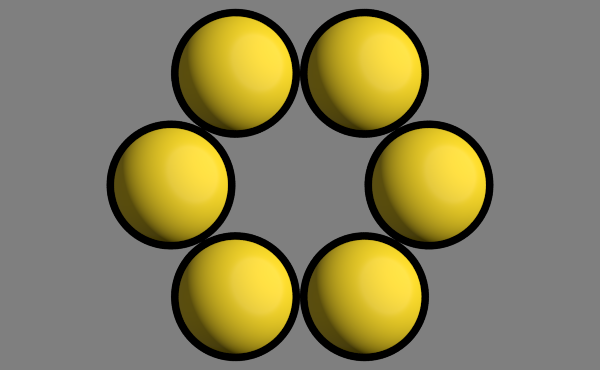
Set a solid background color:
[6]:
scene.background_alpha = 1.0
scene.background_color = fresnel.color.linear([0.592, 0.722, 0.98])
[7]:
fresnel.preview(scene, aa_level=3)
[7]:
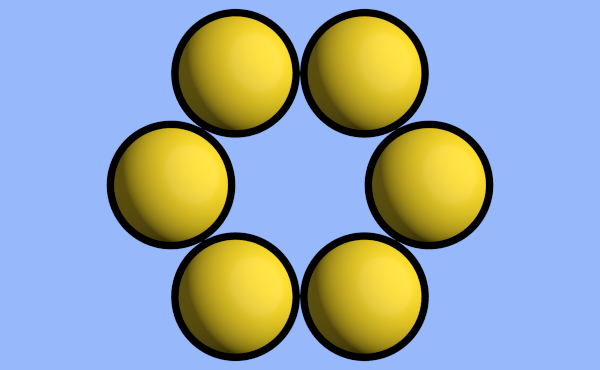
Light sources¶
Light sources light the objects in the scene. Without lights, all objects are black.
[8]:
scene.lights.clear()
[9]:
fresnel.preview(scene, aa_level=3)
[9]:
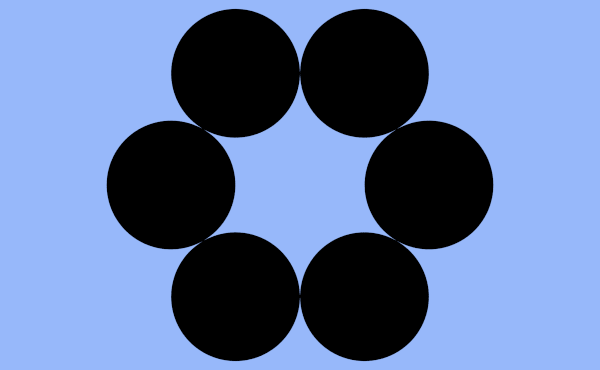
Fresnel defines several standard lighting setups that may be easily applied.
[10]:
scene.lights = fresnel.light.butterfly()
[11]:
fresnel.preview(scene, aa_level=3)
[11]:
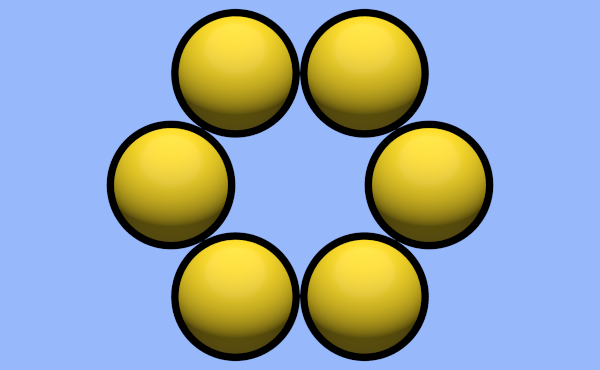
You can modify individual lights.
[12]:
scene.lights[0].direction = (-1, 0, 1)
[13]:
fresnel.preview(scene, aa_level=3)
[13]:
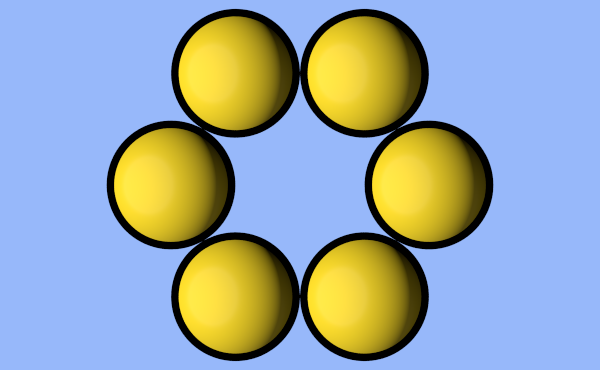
Camera¶
The camera defines the view to render into the scene. By default, the camera is auto and the camera is automatically selected to fit the scene every time it is rendered.
[14]:
print(scene.camera)
auto
You can obtain the same camera explicitly with camera.fit. Call it after defining all of the geometry in your scene.
[15]:
scene.camera = fresnel.camera.fit(scene)
A camera is defined by its position, look-at point, up vector and height of the view into the scene. All of these quantities are in scene coordinates.
[16]:
scene.camera = fresnel.camera.orthographic(position=(0,0,2), look_at=(0,0,0), up=(0,1,0), height=6)
fresnel.preview(scene, aa_level=3)
[16]:

You can modify these parameters individually.
[17]:
scene.camera.position = (3, 0, 10)
scene.camera.look_at=(3,0,0)
[18]:
fresnel.preview(scene, aa_level=3)
[18]:
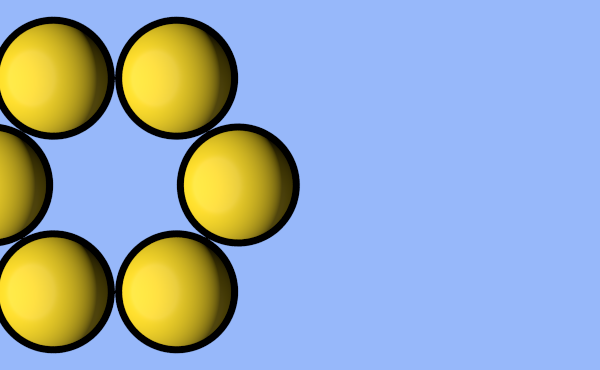
Print the full representation of the camera.
[19]:
print(repr(scene.camera))
fresnel.camera.orthographic(position=(3.0, 0.0, 10.0), look_at=(3.0, 0.0, 0.0), up=(0.0, 1.0, 0.0), height=6.0)
You can copy and paste this text to reproduce the same camera elsewhere.
[20]:
scene.camera = fresnel.camera.orthographic(position=(3.0, 0.0, 10.0),
look_at=(3.0, 0.0, 0.0),
up=(0.0, 1.0, 0.0),
height=6.0)
This page was generated from a jupyter notebook. You can download and run the notebook locally from the fresnel-examples repository.